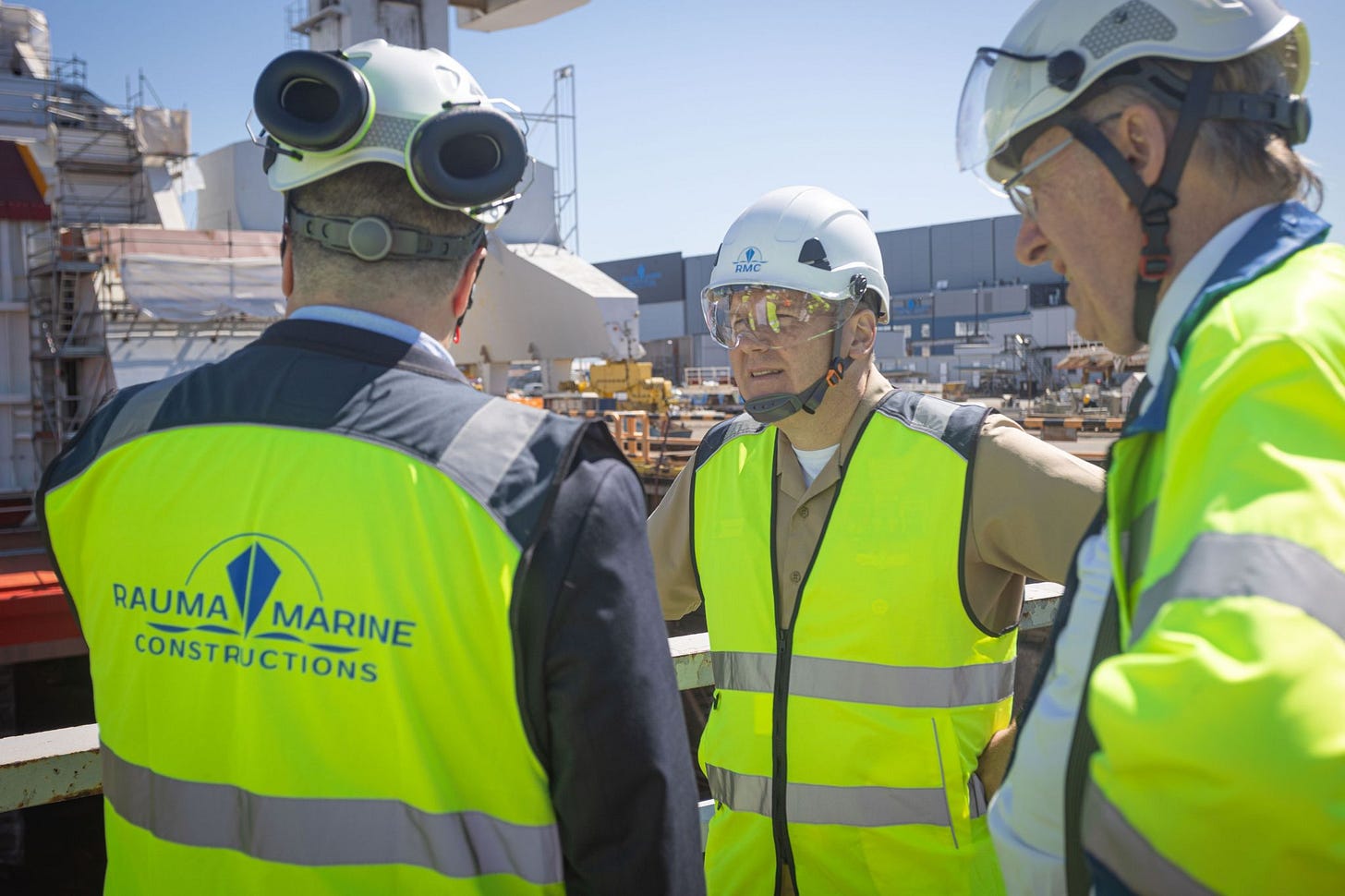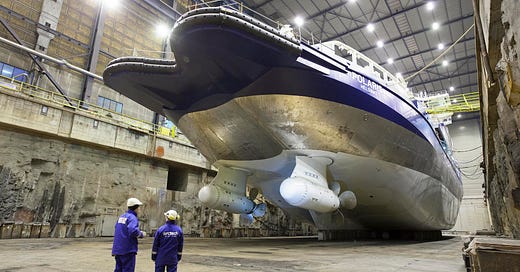Yes, the U.S. Coast Guard Can Build Icebreakers in Foreign Shipyards
Or any ships, for that matter. It just takes some political will. The same goes for the U.S. Navy.
Momentum is building within the United States for a National Maritime Strategy.
In September of last year, Secretary of the Navy Carlos Del Toro gave a speech in which he called for a “new maritime statecraft.”
On April 30th, a bicameral and bipartisan Congressional group released Congressional Guidance for a National Maritime Strategy.
Last week CNA, a research organization in Arlington, VA hosted a three-day Maritime Statecraft Workshop organized by the Secretary of the Navy and the U.S. Maritime Administration.
With the United States simultaneously facing the problems of having too few ships and lacking an industrial base to build them, working with foreign partners is once again on the table. Partnering can help address both problems, as it will lead to the faster acquisition of more ships and create opportunities for foreign shipbuilders to work with and improve the capabilities of U.S. shipyards.

But is it legal to build ships for the U.S. Navy and Coast Guard in foreign shipyards?
I’ve answered this question before and am happy to do it again now, as many new voices are joining this conversation.
Short answer: it is legal!
But it will require some political will. Here is the relevant law:
U.S. Coast Guard: Title 14 U.S. Code:
§1151. Restriction on construction of vessels in foreign shipyards
(a) Except as provided in subsection (b), no Coast Guard vessel, and no major component of the hull or superstructure of a Coast Guard vessel, may be constructed in a foreign shipyard.
(b) The President may authorize exceptions to the prohibition in subsection (a) when the President determines that it is in the national security interest of the United States to do so. The President shall transmit notice to Congress of any such determination, and no contract may be made pursuant to the exception authorized until the end of the 30-day period beginning on the date the notice of such determination is received by Congress.
The U.S. Navy: Title 10 U.S. Code:
§8679. Construction of vessels in foreign shipyards: prohibition
(a) Prohibition.—Except as provided in subsection (b), no vessel to be constructed for any of the armed forces, and no major component of the hull or superstructure of any such vessel, may be constructed in a foreign shipyard.
(b) Presidential Waiver for National Security Interest.—(1) The President may authorize exceptions to the prohibition in subsection (a) when the President determines that it is in the national security interest of the United States to do so.
(2) The President shall transmit notice to Congress of any such determination, and no contract may be made pursuant to the exception authorized until the end of the 30-day period beginning on the date on which the notice of the determination is received by Congress.
(c) Exception for Inflatable Boats.—An inflatable boat or a rigid inflatable boat, as defined by the Secretary of the Navy, is not a vessel for the purpose of the restriction in subsection (a).

Note: The Jones Act Does Not Apply
I’ve heard the Jones Act cited so often that I thought I would address it directly: The Merchant Marine Act of 1920- of which Section 27 is known as the Jones Act- does not apply. The title gives it away- the law applies to the Merchant Marine. The Jones Act requirements (vessels must be U.S. built, owned and crewed by U.S. citizens) apply only to merchant marine vessels that transfer cargo from one U.S. point to another U.S. point1. Note that this doesn’t cover commercial icebreaking, as long as no cargo is transferred. In the recent past Finnish multi-purpose icebreakers Nordica and Fennica have supported Shell’s oil exploration off the coast of Alaska.
Summary: Waiver Required
Paragraph (a) of the quoted sections above does prohibit the construction of ships for the U.S. Navy and U.S. Coast Guard in foreign shipyards. But the (b) paragraphs provide for a waiver if the President2 determines that it is in the national security interest of the United States to do so, with a required notification to Congress.
In practice Congress would need to support such a plan by appropriating funds for the project.
Thanks for reading. If you like what you’ve seen, press the heart and subscribe to make sure that you never miss an update. Consider sharing with a friend or eleven; it takes me some time to research and write these articles, so I’m happy to see them spread far and wide. It’s important to keep this conversation going.
Until next time.
All the Best,
PGR
Passenger vessels designed to move passengers from one U.S. port to another also fall under the Jones Act. Cruise ships can also fall under the Jones Act, but many are exempt based on a regulatory determination. More information on the Jones Act can be found here.
For the U.S. Navy, this waiver authority is delegated to the Secretary of Defense. See Executive Order 12765. Note that S 8679 was numbered 7309 at the time of the Executive Order’s signing.





I would like the work to be done stateside but understand that it may take time to train and incorporate a new generation of young, energetic American shipyard employees and contractors.
Doing some work overseas may bridge the gap until we can get back up to speed.
Peter, would you please clarify what qualifies a shipyard to build a Jones Act ship? My former company bid to provide the galleys, bars, pantries and food prep areas for an intended Jones Act cruise ship in the 1990’s. As I recall, only the hull had to be U.S. steel to meet the requirement.
Kind regards,
Jack